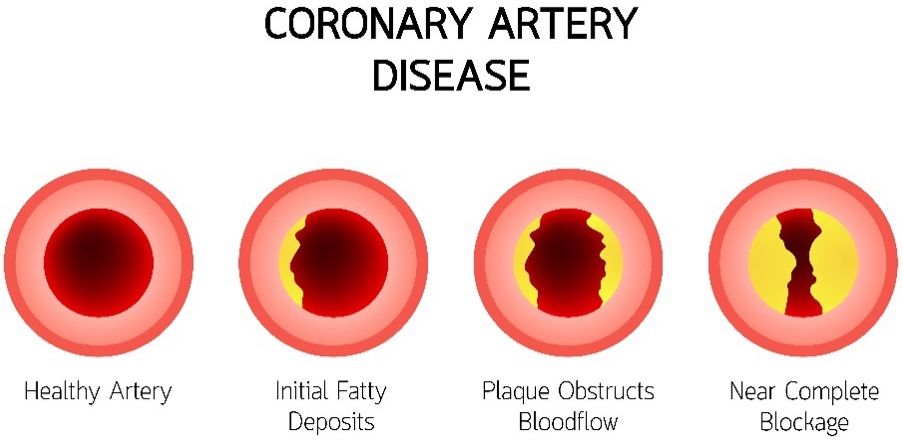High Blood Pressure: What You Need to Know
High blood pressure, also called hypertension, increases your health risks. If you have high blood pressure, you have a higher chance of developing heart or kidney disease or having a stroke.
Why worry about high blood pressure?
Heart disease is the number one killer of both men and women in the United States, and stroke is the fifth most common cause of death. About one in two American adults has high blood pressure, which is especially dangerous because it often has no symptoms. If you do not know you have high blood pressure, you will not get medical help to lower it.
The good news is that you can easily find out if you have high blood pressure by having your blood pressure checked. If your blood pressure is high, you can take steps to lower it. Just as important, if your blood pressure is normal, you can learn how to keep it from becoming high. This fact sheet will help you make choices to achieve or maintain a healthy blood pressure.
What is blood pressure?
Your arteries carry blood from the heart to your body's organs. Each time your heart beats (about 60–70 times a minute at rest), it pumps blood into the arteries. Blood pressure is the force of the blood pushing against the walls of those arteries.
Blood pressure is highest when the heart contracts and pumps the blood. This is the systolic pressure. When your heart is at rest between beats, the blood pressure falls. This is the diastolic pressure. Your blood pressure normally varies depending on what you are doing. For example, if you run for a bus, your blood pressure goes up. When you sleep at night, your blood pressure goes down.
What happens when blood pressure is high?
Some people have blood pressure that stays high most or all of the time. Their blood pushes against the walls of their arteries with higher-than-normal force. If left untreated, high blood pressure can lead to serious medical problems such as the following.
- Coronary Heart Disease (Coronary Artery Disease)
Coronary heart (or artery) disease is caused by a buildup of a waxy substance called plaque in the arteries within the heart. High blood pressure speeds the buildup of plaque. When plaque hardens, it can narrow the arteries and block the flow of blood to a part of the heart. This causes chest pain called angina. If blood flow to the heart is completely blocked, it causes a heart attack.
2. Heart Failure
Heart failure occurs when other conditions, like coronary heart disease or high blood pressure, have greatly weakened the heart muscle. With heart failure, the heart either cannot fill with enough blood or becomes unable to pump enough blood to reach all parts of the body. Nearly 6 million people in the United States have heart failure. Several treatments can help people live active lives, but prevention is best.
3. Kidney Failure
The kidney acts as a filter to rid the body of wastes. High blood pressure damages blood vessels in the kidneys. The damaged arteries filter less fluid, causing wastes to build up in the blood. Over time, uncontrolled high blood pressure can lead to kidney failure, which requires dialysis or a kidney transplant.
4. Stroke
High blood pressure can cause arteries to narrow. If a blood clot blocks a narrowed artery that goes to the brain, a stroke can occur. A stroke can also occur if high blood pressure causes a break in a weak blood vessel in the brain.

Credit: Getty Images
Who is likely to develop high blood pressure?
Anyone can develop high blood pressure, but some people are more likely to have it than others. Your age, gender, ethnic background, and family history affect your risk.
The number of men and women with high blood pressure increases rapidly with age. More than half of Americans over the age of 65 have high blood pressure. In early middle age, men are more likely than women to have high blood pressure. As men and women age, the reverse becomes true. After menopause, more women have high blood pressure than men of the same age.
High blood pressure is also more common in African Americans regardless of gender. Finally, heredity can affect risk. If your parents or grandparents had high blood pressure, you are at greater risk than if you have no family history.
High blood pressure can also occur in children. Even if everyone in your family is healthy, you and all of your family members should get your blood pressures checked on a regular basis.
How is blood pressure checked?
Having your blood pressure checked is quick, easy, and painless. Blood pressure is measured with an instrument called a sphygmomanometer (sfig-mo-ma-nom'-e-ter). A blood pressure cuff is wrapped around your upper arm and inflated. This stops blood flow in your artery for a few seconds. A valve is opened and air is released from the cuff. Then, using a stethoscope, a medical professional can hear the sounds of your blood rushing through an artery.
The first sound heard is the systolic blood pressure. It represents the maximum pressure in the artery produced as the heart contracts and blood begins to flow. The second sound heard is the diastolic blood pressure. It represents the lower pressure in the artery when the heart is at rest.
In addition to having your blood pressure checked manually by a health care professional, you may check your blood pressure using a digital blood pressure measuring machine (typically found in pharmacies) or at home using an automated blood pressure monitor.

Credit: Getty Images/bluecinema
What do the numbers mean?
Blood pressure is expressed by two numbers that represent the systolic and diastolic pressures. These numbers are measurements of millimeters (mm) of mercury (Hg). Blood pressure is written with the systolic number on the top and the diastolic number on the bottom. A blood pressure measurement of 120/80 mm Hg is expressed as "120 over 80."
Blood pressure:
- 120 mm Hg=Systolic=Heart beating
- 80 mm Hg = Diastolic = Heart at rest
If your blood pressure is less than 120/80 mm Hg, it is considered normal. If your systolic blood pressure is 120–129 mm Hg AND your diastolic blood pressure is less than 80 mm Hg, your blood pressure is elevated. This means you are at risk for high blood pressure and you should take steps to lower it. High blood pressure becomes more serious as the numbers increase. The following table shows categories of blood pressure levels in adults.
Table 1. Classification of blood pressure.
What causes high blood pressure?
For most people (85%), there is no known cause of high blood pressure. This is called primary or essential hypertension. Essential hypertension often occurs as people age. It cannot be cured, but it can usually be controlled. That is why everyone should have their blood pressure checked regularly.
In some people, high blood pressure can be traced to a known cause, such as chronic kidney disease, use of birth control pills, or pregnancy. This type is called secondary hypertension. It is usually cured when the cause is corrected or ends.
How can you prevent high blood pressure?
Everyone—regardless of race, age, sex, or heredity—can help lower their chance of developing high blood pressure. To reduce your risk for high blood pressure, strive to reach these goals:
- Maintain or move toward a healthy weight.
- Be physically active for at least 30 minutes each day.
- Choose and prepare foods with less salt.
- Eat at least 2 cups of fruit and 2½ cups of vegetables every day.
- If you drink alcoholic beverages, do so in moderation. This means up to one drink a day for women and up to two drinks a day for men.
If your blood pressure is normal, all of these practices will help keep it that way. They are also recommended if your blood pressure is already high. Medicine is often part of the treatment for high blood pressure.

Credit: UF/IFAS photo by Tyler Jones
Another important measure for your health is to avoid smoking! Although smoking does not cause high blood pressure, it increases the risk of heart attack and stroke.
Reaching Your Lifestyle Goals
You may wonder how to reach the goals outlined in this publication. Help is available! For more information on reducing your risk for high blood pressure, see EDIS publication FY305, Living Well to Keep Your Pressure Down at https://edis.ifas.ufl.edu/fy305. This fact sheet will give you tips for reaching the recommended goals to reduce your risk of high blood pressure.
Research shows that the DASH (Dietary Approaches to Stop Hypertension) eating plan can help prevent or lower high blood pressure. To learn more about DASH, visit DASH Eating Plan | NHLBI, NIH.
For More Information
UF/IFAS Extension Offices
Your local UF/IFAS Extension agent may offer programs on blood pressure control, weight management, and other healthy living topics. In Florida, find your local UF/IFAS Extension office in the government section of your phone book or online at https://sfyl.ifas.ufl.edu/find-your-local-office/.
Hospitals
Local hospitals may have lectures on topics related to blood pressure and cardiovascular health.
Reliable Websites
UF/IFAS Extension: https://sfyl.ifas.ufl.edu/
National Heart, Lung, and Blood Institute: http://www.nhlbi.nih.gov/health/index.htm
National Institute of Diabetes and Digestive and Kidney Diseases: http://www2.niddk.nih.gov
American Heart Association: http://www.americanheart.org
American Stroke Association: http://www.strokeassociation.org
National Stroke Association: http://www.stroke.org




